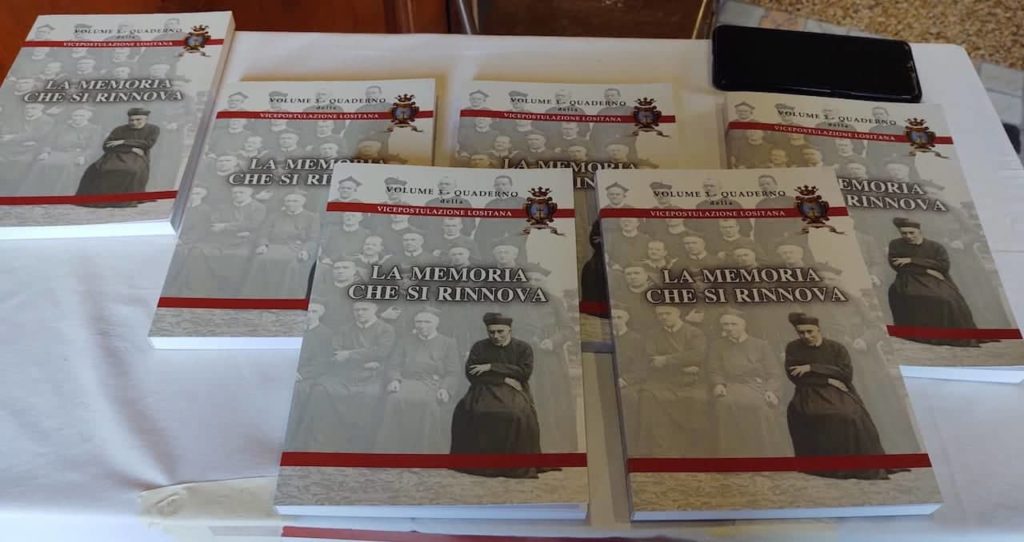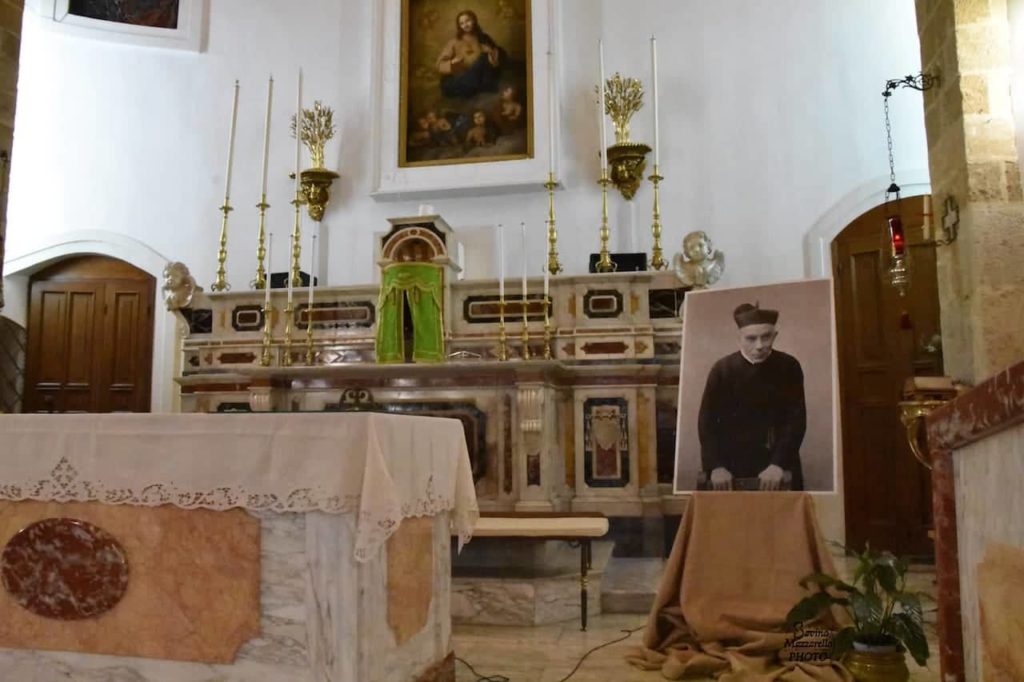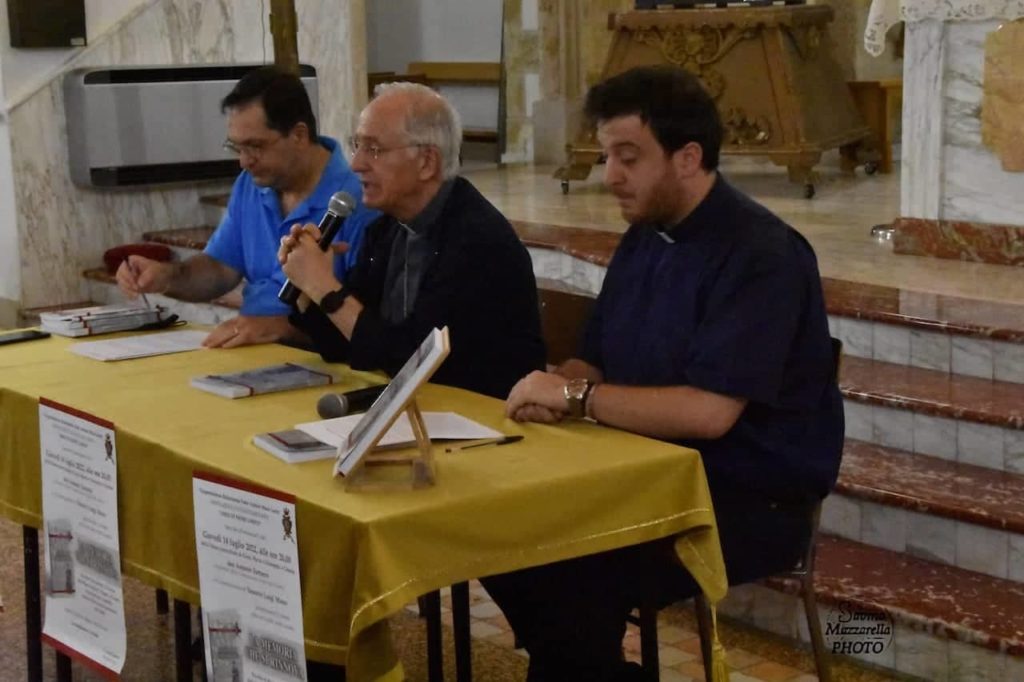On Monday, 18 July, the 105th anniversary of the death of the Venerable Father Antonio Maria Losito was solemnly celebrated in Canosa di Puglia, with a celebration presided over by the Bishop of Andria, Monsignor Luigi Mansi.
On the 14th in the Parish of Jesus and Mary, the presentation of the volume “La Memoria che si rinnova” took place, in the presence of the diocesan bishop himself, the editors, vice-postulator Father Mario Porro and Professor Michele Allegro, and Father Antonio Turturro, deputy director of the Social Communications Office of the same diocese.
Below is the text of the presentation (pp. 9-15) by Father Vincenzo La Mendola C.S.R., in which the genesis, content and structure of the book are explained.
The “Quaderni” series, edited by the Vicepostulation Lositana and the Study Centre of the same name, is enriched by another publication, entitled “La Memoria che si rinnova”, the third volume of the series. It contains an important collection of documents and homilies from the Masses celebrated in Pagani and Canosa in memory of the Venerable Antonio Maria Losito Redemptorist, which took place over a century, namely from 1917 to 2020.
The text is divided into five sections, within which the speeches relating to the various circumstances and anniversaries are presented:
- Funeral Eulogies on the Servant of God, 1917-1999
- Homilies on the 70th anniversary of his death and the 150th anniversary of his birth, 1917-1987 e 1838-1988
- Homilies in the annual commemorations of the birth, death and translation, 2000-2020
- Homilies on the occasion of the thanksgiving for the declaration of Venerability, the first centenary of the dies natalis and the recognition of relics, 2016-2017
- Prayers for the canonisation of the Servant of God formulated by the Bishops of the Diocese of Andria and the Redemptorist Vice Postulation, 1920-2016
The material collected constitutes an important part of the historical documentation regarding Losito’s reputation for holiness. The various contributions, arranged thematically and chronologically, each in its own genre, are important pieces that, read in sequence and in their temporal placement, express the constant veneration for the personality of the Canosa Redemptorist, which has never faded.
Actors in this production, partly unpublished, partly little known, are the city of Canosa together with the Diocese of Andria and the Congregation of the Most Holy Redeemer in its Neapolitan Province and its General Postulation.
The figure of the Apulian missionary equally challenges and involves the two institutions. In fact, his biography unfolds between his country of origin and the Congregation to which he belongs. In their respective environments, the signs of Fr. Losito’s passage are many and, over time, have contributed to transforming the “places of memory” into “pilgrimage destinations” and spiritual and cultural encounters.
Often, as can be seen from the pages of the review, Canosians and Redemptorists met together to commemorate Losito, forging bonds of friendship and mutual esteem. Contacts had already been established during the life of the Servant of God, as is evident from the frequent presence of Redemptorist Missionaries in Canosa and the continuous pilgrimage of Canosians to Pagani, even after his transit.
It can be said that the Canosa-Pagani binomial ideally constitutes the ‘Lositano shrine’ par excellence, where interesting relics of the Venerable are kept.
The weaving of the dense fabric of memory has taken place in a natural and progressive manner over the years, marked by anniversaries and jubilees, celebrated in one or the other location, symbolising the passage of Father Antonio to the earthly city, he too identified with both places, in which his Canosian and Ligurian identity are recapitulated.
The collection of the official “Acts” that marked the commemorative celebrations in a single text is sure evidence of a growing reputation for holiness, promoted by the two institutions in question, in response to a spontaneous and natural devotion of the people of God, who, with their “supernatural sense”, recognise the traces of the Spirit’s action at all times.
It is also an agile documentary source for those who wish to explore what has been said over the course of a century on the character in question, the object of continuous re-reading and re-understanding by a community that recognises him as an indispensable point of reference for its own itinerary of faith.









